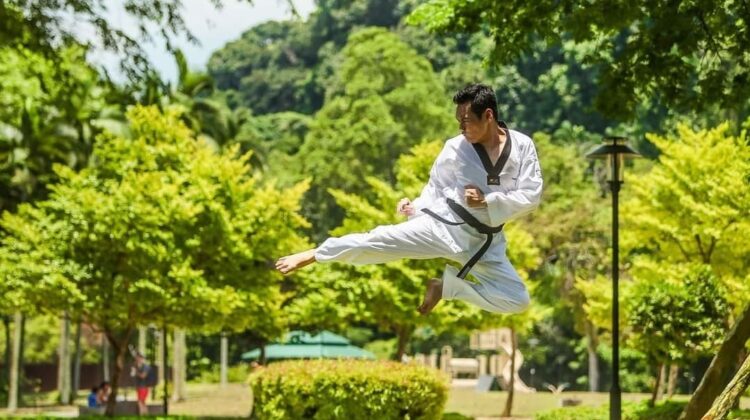
Martial Arts: Asia’s Enduring Cultural and Athletic Legacy
Martial arts stand as a testament to the rich cultural and historical mosaic of Asia, where these disciplines first sprouted and thrived for centuries. From the sharp precision of karate to the graceful fluidity of kung fu, martial arts weave together philosophy, rigorous physical conditioning, and spiritual growth. These time-honored practices, anchored in diverse traditions across various Asian regions, have significantly shaped modern sports and global culture alike. This piece delves into the intricate and enduring heritage of Asian martial arts, exploring their roots, cultural weight, and far-reaching impact across the globe.
The Deep Roots of Asian Martial Arts
The genesis of martial arts within Asia stretches back millennia, birthed from primal needs for self-preservation, hunting, and military expertise. Over time, these combative methods matured, passed down through the ages, often interlaced with philosophical and spiritual ideologies.
China, India, and Japan are home to some of the earliest martial traditions, each fostering unique systems of combat, discipline, and self-control. Kalaripayattu, an ancient Indian discipline dating as far back as the 3rd century BCE, is often hailed as the progenitor of martial arts, influencing subsequent forms in China and Southeast Asia. As trade routes, monks, and warriors navigated across borders, martial traditions spread and branched out, birthing various forms like Chinese kung fu, Japanese judo, and Korean taekwondo.
Chinese Martial Arts: The Origins of Kung Fu
Chinese martial arts, or kung fu (also known as wushu), have an unparalleled legacy spanning over 4,000 years. Initially forged for survival and self-defense, kung fu transcended its combative origins to become a holistic discipline that engages the mind, body, and spirit.
The legendary Shaolin monks, renowned for their martial mastery, were pivotal in shaping kung fu, intertwining Buddhist teachings with martial training. Kung fu marries external techniques such as strikes, locks, and weaponry with internal practices of balance and breath control. It champions virtues like patience, discipline, and respect.
Styles such as Wing Chun, Tai Chi, and Sanda represent just a few branches of kung fu, each with distinct characteristics. Today, kung fu has permeated every corner of the world, influencing everything from movie fight scenes to modern self-defense techniques.
Japanese Martial Arts: The Path of the Warrior
In Japan, martial arts are often underpinned by the code of bushido—the “way of the warrior”—which emphasizes honor, self-restraint, and unwavering loyalty. Japan has gifted the world with renowned disciplines such as karate, judo, and aikido.
Karate, translating to “empty hand,” emphasizes strikes, blocks, and kicks, focusing on choreographed sequences called katas, aimed at perfecting form and technique. The art originated in the Ryukyu Kingdom, later absorbed by Japan, and was heavily influenced by Chinese martial traditions.
Judo, created by Kano Jigoro in the 19th century, is the “gentle way,” focusing on throws and holds that utilize an opponent’s force against them. Judo has gained immense global traction and has earned a place in the Olympic Games.
Aikido, developed by Morihei Ueshiba, revolves around harmonizing with an opponent’s energy and redirecting it. This art prioritizes joint locks and throws rather than strikes and has a strong philosophical undercurrent of peace and unity.
Korean Martial Arts: Taekwondo’s Global Reach
Korean martial arts, particularly taekwondo, have become integral to the global martial arts landscape. Meaning “the way of the foot and the fist,” taekwondo emphasizes high, fast kicks and powerful strikes. Developed in post-war Korea, it has gained worldwide recognition, becoming a major Olympic sport.
In addition to taekwondo, Hapkido stands out in Korean martial traditions, blending joint locks, throws, and strikes. This hybrid system draws upon Japanese aikido and Korean combat techniques, making it a comprehensive self-defense approach.
Martial Arts as a Cultural Pillar
Across Asia, martial arts are far more than mere physical contests—they are intrinsic to cultural identity, spiritual practices, and national pride. Nations like Thailand, Vietnam, and Indonesia each have their own distinct martial arts, deeply woven into their history and traditions.
For example, Thailand’s Muay Thai, or “the art of eight limbs,” is a revered national sport and cultural symbol. Evolving from ancient battlefield combat, Muay Thai employs elbows, knees, fists, and shins, making it one of the most intense and revered combat sports globally.
In Vietnam, Vovinam blends kung fu, judo, and traditional Vietnamese techniques to create a versatile system. Silat, practiced across Indonesia, Malaysia, and the Philippines, incorporates a variety of techniques and reflects the spiritual and ritualistic traditions of these regions.
The Worldwide Spread of Martial Arts
Though their roots lie in Asia, martial arts have become a global phenomenon. They have broken cultural barriers, shaping fitness trends, cinema, and modern sports like mixed martial arts (MMA). Fighters worldwide have incorporated traditional Asian martial techniques such as judo, Muay Thai, and karate into their training regimes.
As martial arts schools continue to spread, the fusion of ancient traditions with contemporary sporting practices highlights the resilience and adaptability of these arts.
Martial Arts: A Spiritual Journey
More than physical prowess, martial arts deeply connect with spiritual and mental cultivation. Many disciplines stress the importance of self-control, mindfulness, and inner peace. Tai Chi, for instance, is often regarded as “meditation in motion,” benefiting both physical health and mental clarity.
In Asian philosophical traditions like Buddhism, Taoism, and Confucianism, martial arts are not simply about defeating an external opponent—they are tools for mastering the self and attaining harmony within.
Martial Arts in Modern Pop Culture
Martial arts have left an indelible mark on modern entertainment, from Bruce Lee’s cinematic legacy to choreographed fight scenes in today’s blockbuster films. These depictions have popularized martial artists as heroic figures, fueling a global fascination with martial arts and inspiring countless practitioners to embrace the discipline.
Today, martial arts remain a vibrant cultural export from Asia, symbolizing a timeless fusion of tradition, innovation, and athletic excellence.
Author: Donglu Shih
Expert in Asian culture and economics. She collaborates with major companies in the field of international relations. Collaborates with The Deeping on Asian political topics

